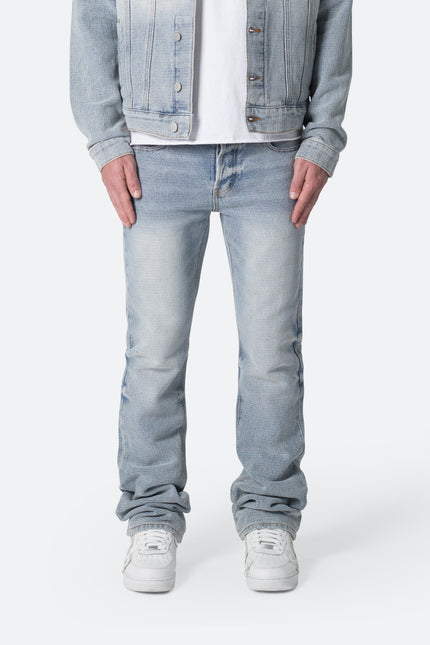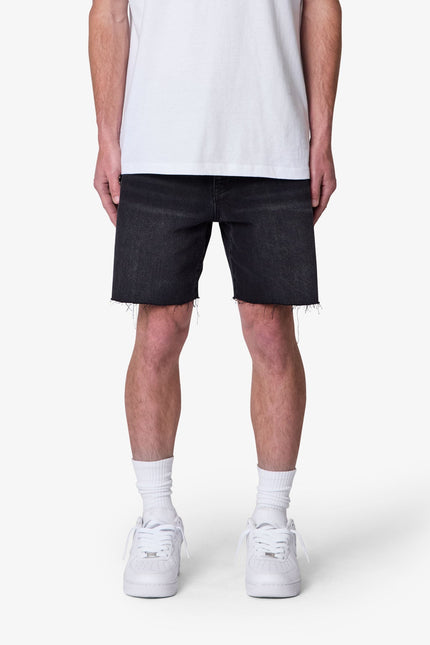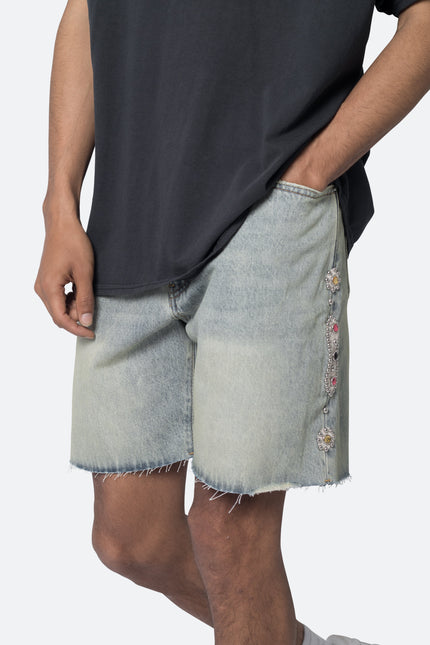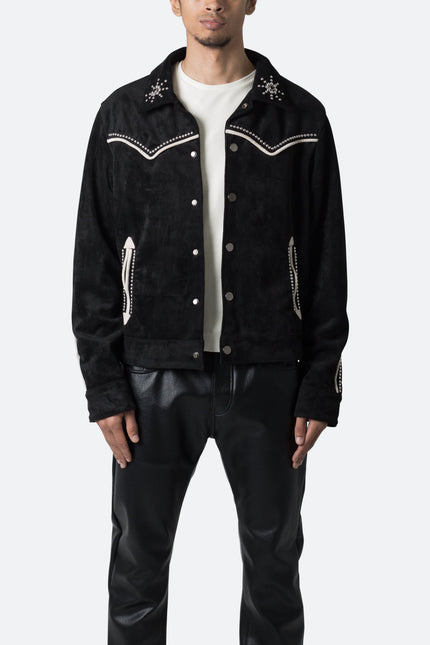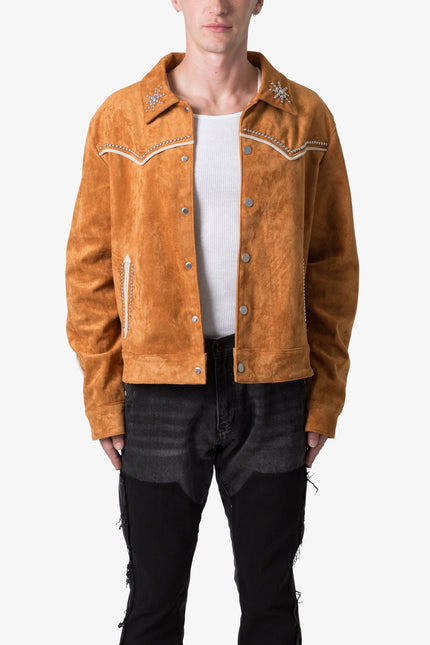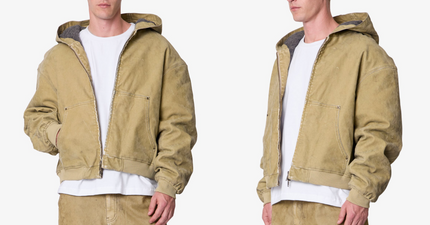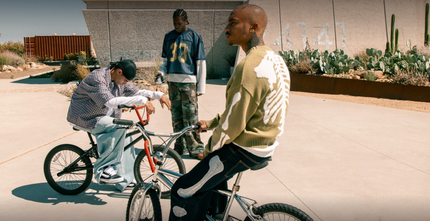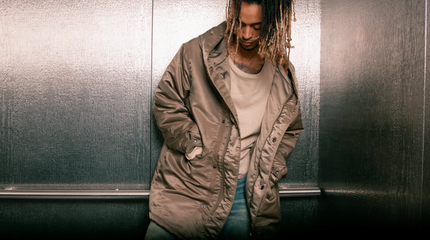Denim might be the most timeless clothing material in the world. Jeans, denim’s most well-known incarnation, have gone from simple, practical workwear to an icon of Americana the world over.
Denim is a sturdy cotton textile, usually dyed blue, that became popular as a material for tough, durable work pants. The centuries following have seen denim diversify. Denim jeans run the gamut from casual wear to high fashion. And beyond pants, denim can be found in everything from shirts to jackets—in just about every color.
So what gives denim such massive staying power?
History of Denim
Denim has been around since the 18th century. Depending on where you are in the world, the timeline to present may look a little different, as denim’s evolution from workwear to modern fashion was influenced heavily by its environment.
Etymology
The word “denim” comes from the phrase de Nimes, indicating the fabric’s origins in the French city of Nimes.1 In the 18th and 19th centuries, this city was a hub of European textile manufacturing. Denim hasn’t been made there for centuries, but the legacy lives on in the name.
Another common name for jeans, “dungarees,” comes from the Hindi dungri, referring to coarse cotton fabric. Specifically, this moniker was applied to sailor’s pants, which were dyed blue using indigo to hide dirt and stains on what would otherwise be white fabric.2
American Origins
Jeans got their start in America as work pants for miners in the California Gold Rush during the 1840s. The tough fabric held up well to unpredictable weather conditions. Plus, the booming economy of indigo cultivation in the American South made blue dye accessible and affordable, leading to the iconic blue color.
he American West’s fascination with jeans continued as they became the pants of choice for ranchers and farmhands. Thus, denim became the working man’s material.
From Farm to Fashion
Hollywood’s fascination with cowboy culture and the rough-and-tumble West brought nationwide popularity to the blue jean. Everyone from all walks of life wanted to emulate their favorite movie stars, so jeans entered the scene.
hrough the decades following, jeans took on new meanings for different groups: a symbol of rebellion, of rock and roll, of post-war suburban teenage life.
By the end of the 20th century, denim’s prominent place in the punk rock and hip-hop movements trickled up into haute couture. By this point, blue jeans represented something unique to each individual, and still do today.
Jeans Today
Denim has so thoroughly permeated society that there are different types of jeans for any occasion. Certain cuts and styles of jeans have even made their way into the business world, while denim’s status as the king of casual remains unchallenged.
How is Denim Made?
Denim is, at its most simple, woven cotton. More specifically, denim is characterized by a twill weave pattern, with one thread passing two or three times under another thread in a diagonal pattern, giving denim its sturdy texture.
he famous blue color comes from the original 19th-century processing with indigo dye, but dyeing options have expanded to synthetic dyes and other materials since then.3
What is Denim Weight?
Despite what some people may believe, all blue jeans are not the same. Denim weight is one of the chief factors of denim make and quality, ranging from lightweight, to medium-weight, to heavyweight.4 The weight of your denim also influences the experience for the wearer.
How to Calculate Denim Weight?
he numerical scale for assessing denim weight comes from the weight of a square yard of the garment’s source fabric:
- Lightweight denim comes in at between 10 and 13 ounces. This is the most immediately comfortable variety, but also the most delicate.
- Medium-weight denim is between 14 and 18 ounces. This variety is a middle ground between comfort and durability. It will usually require a breaking-in period for optimal comfort but should hold up to some wear and tear.
- Heavyweight denim is true workwear. Weighing in at 19 ounces and up, this style of fabric will last a long time, sacrificing some comfort for longevity.
For most people, medium-weight denim will best balance wearability and long-term prospects. These categories vary, with different manufacturers using different weight designations. When in doubt, go by feel and pick whatever feels comfortable or durable enough for the way you want to wear them. More importantly, knowing how to wash jeans based on their composition and care instructions can help elongate their lifespan.
Different Denim Colors
Denim is practically synonymous with its standard azure hue. (The proof is in the ubiquity of the phrase “blue jeans.”) However, jeans have come a long way from their monochrome indigo beginnings.
Jeans are available in almost any color thanks to the invention of mass-produced dyes. Black jeans work well in more dressed-up settings, while unique tones like red jeans add a personalized flair to an unassuming look.
Sticking to denim’s classic blue origins, washed jeans offer variety and gradation. Dark blue jeans and light wash jeans offer subtle alterations to the classic blue jean appeal.
ypes of Denim
With nearly three centuries of history, it’s only natural that denim has undergone a few evolutions. All of these types of denim share their origins in the workshops of Nimes and the gold boomtowns of California, but paved their own way thereafter.
#1 Raw Denim
Raw denim is any pure-cotton woven twill fabric that’s never been washed. All denim starts off this way but is usually washed and treated at some point in the process.
Raw denim is stiff to the touch, often having been treated with some form of starch. It may not be the most comfortable, but the stiffness of raw denim means it maintains a distinct silhouette, desirable for streetwear styling. Be careful not to wash it.
#2 Selvedge Denim
Selvedge is the most desirable form of raw denim, made laboriously by hand on a shuttle loom. This method of manufacturing creates a “self-edge” (hence the name) by weaving the cotton fibers in one continuous thread, resulting in an end product with no loose or frayed ends. Mass-produced denim simulates this by manually finishing its hems.5
#3 Stretch Denim
Stretch denim is still mainly cotton but contains a small portion of elastic fiber, often spandex. This gives it more flexibility, making the jeans more comfortable. The elastic component of stretch denim makes it more form-fitting and less distinctly shaped. Stretch denim will also shrink if washed and dried too often.
#4 Washed Denim
he opposite of raw denim, washed denim is softer to the touch and, depending on the intensity of the wash, comes in a variety of shades. Light-washed jeans have risen in popularity in recent years and have made their mark in high fashion and streetwear.
he Best in Streetwear Denim
Denim is a staple of streetwear. With denim from mnml, you’re getting the highest quality textiles at incredible prices. Our online business model cuts out the costs associated with brick-and-mortar overhead to bring affordable style directly to you.
If you’re looking to step up your looks, try our straight every day denim. If you want to lean into jeans’ more modern versions, then check out some options like Old English denim that embrace print and color.
No matter your style, mnml has the look for you: from baggy jeans, to skinny, to flared denim and more. Every single pair is thoughtfully made to make you look good and pay less.
Sources:
- BBC. How the birthplace of denim is making jeans again. https://www.bbc.com/news/business-37523552
- Etymonline. Dungaree. https://www.etymonline.com/word/dungaree
- Green Matters. Denim: How It’s Made. https://www.greenmatters.com/style/denim-how-its-made
- Men’s Health. What Does Denim Weight Mean? https://www.menshealth.com/style/a19535883/what-does-denim-weight-mean/
- 7 Things You Should Know About Jeans. https://www.gq.com/story/7-things-you-should-know-jeans-from-denim-expert-scott-morrison
- Thirteen. Jeans: The History of Everyone’s. https://www.thirteen.org/blog-post/jeans-history-in-america-documentary/


